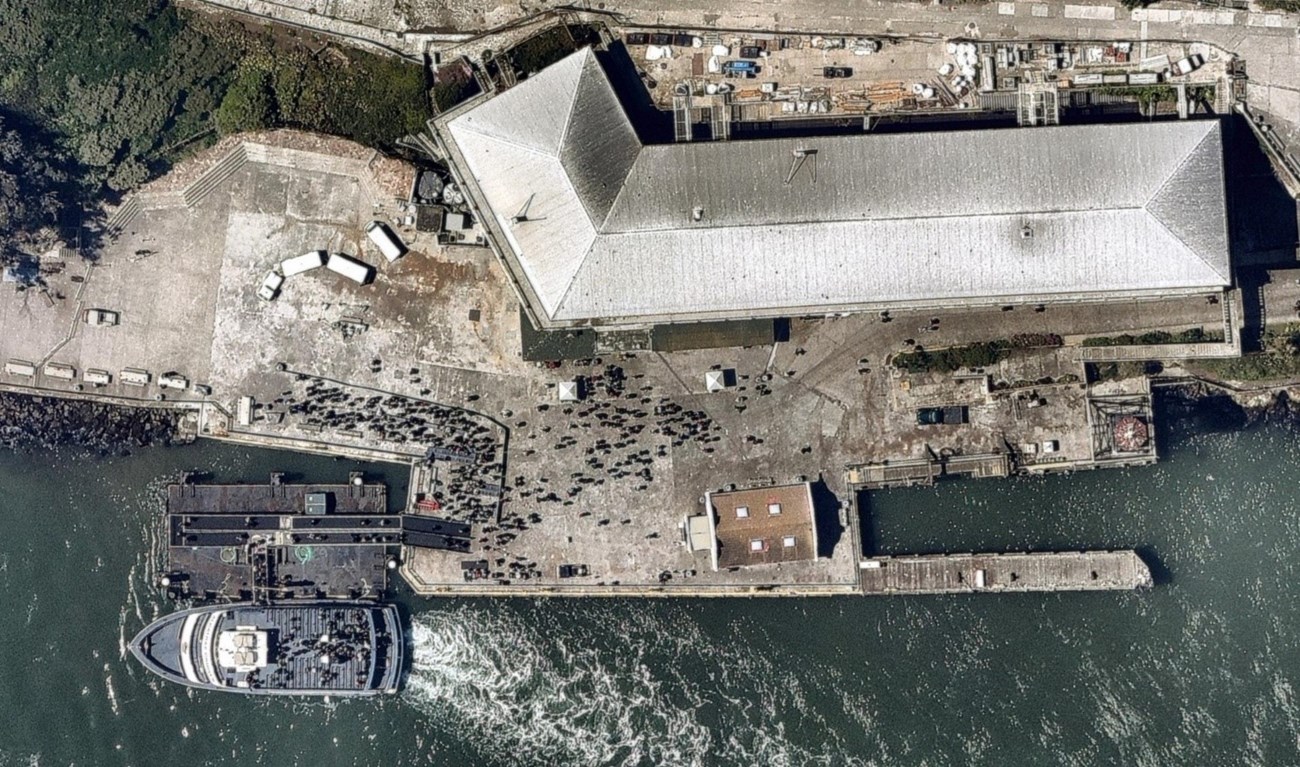Last updated: May 1, 2024
Article
Central to visitor access: stabilizing 1939 Alcatraz Island wharf

NPS Photo
This project will repair and seismically strengthen the concrete wharf on Alcatraz Island, a contributing feature of the Alcatraz Island National Historic Landmark District, with funding from the Great American Outdoors Act (GAOA). Work will repair the historic, steel-cased concrete piles, concrete beams, and concrete slabs, all of which are in fair to poor condition with varying degrees of damage. Two new seismic resisting elements will improve the ability to withstand the demands of its location in the San Francisco Bay.

NPS Photo
The project will also include, subject to availability of other funding, repairs to the finger pier which is connected to the concrete wharf. The existing wooden fender, bearing piles, cross bracing, gangway ramp landing, and motorized pulley system will be repaired or replaced. The finger pier is in overall fair condition and is an important historic resource and critical for island operations as an egress point for staff, visitors, and emergency personnel.
Project at a Glance:
This $36.5 million project will repair and seismically strengthen the 1939 concrete wharf on Alcatraz Island, a contributing feature of the Alcatraz Island National Historic Landmark District, and the prime location on the island to land and offload boats. Completion of the project will ensure that over $60 million in annual NPS revenues will continue to be generated from Alcatraz Island visitor services, and that visitors, government, concession, and park partners have consistent, safe access to the island for operations.What are the Benefits:
- The Alcatraz wharf, a contributing historic feature to the Alcatraz Island Historic Landmark District, is preserved.
- A wharf critical for visitor access and Alcatraz Island operations is upgraded to improve safety.
- Stabilization provides continued use of the wharf as the public assembly area with an occupancy load of up to 1000 people for people traveling to the island.
- Over $60 million in annual NPS revenue is generated from Alcatraz Island visitor services. Much of it helps fund necessary park projects.
- This project builds on major previous investments to repair the concrete wharf started, but not completed, by the NPS in 2000, and improvements to the gangway and replacement of fender piles by the concession in 2010 and 2018.
- The island’s water and wastewater infrastructure and a diesel fuel line for the island’s power generating system will be protected by wharf repairs.
- Protection of the water quality and aquatic habitats of the San Francisco Bay.
- Protection against the possibility of a catastrophic wharf failure with potential associated loss of life and property.
- The strengthened pier will allow uninterrupted access to Alcatraz facilities for contractors to perform future rehabilitation projects on the island.
- Alcatraz facilities and systems addressed by this project should not require major rehabilitation or replacement for the next 40-75 years.

NPS Photo
Project Purpose and Goals:
- Repair and stabilize the 1939 Alcatraz concrete wharf, the prime location on the island to land and offload boats.
- Ensure that visitors, government, concession, and park partners have consistent, safe access to the island, and future project work can be completed efficiently.
- Seismically strengthen a contributing feature of the Alcatraz Island National Historic Landmark District.
- Maintain the historical integrity of the concrete wharf and adhere to the Secretary of the Interior’s Standards for the Treatment of Historic Properties.
- Protect the island’s water and wastewater infrastructure and a diesel fuel line for the island’s power generating system.
- Reduce deferred maintenance and repairs.
- Build on major previous investments in repairs to the Alcatraz wharf, and improvements to the gangway and replacement of fender piles.
